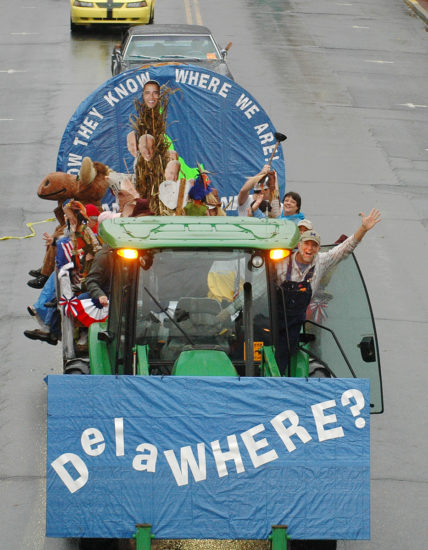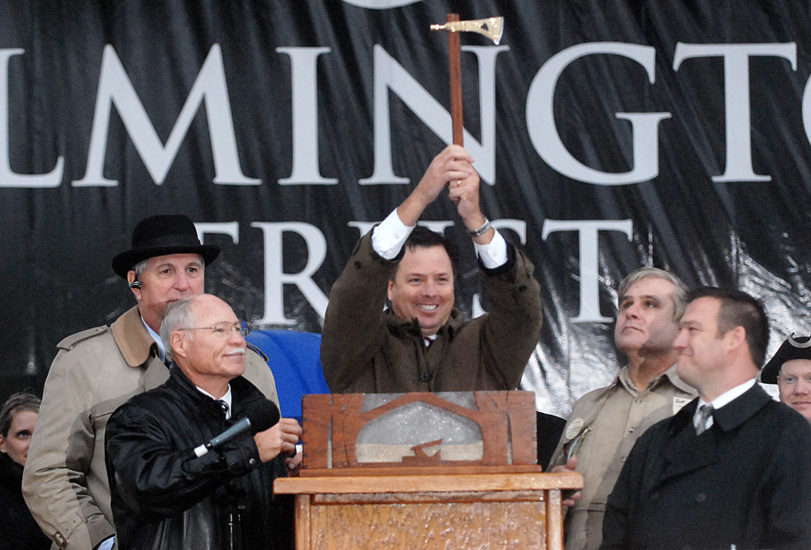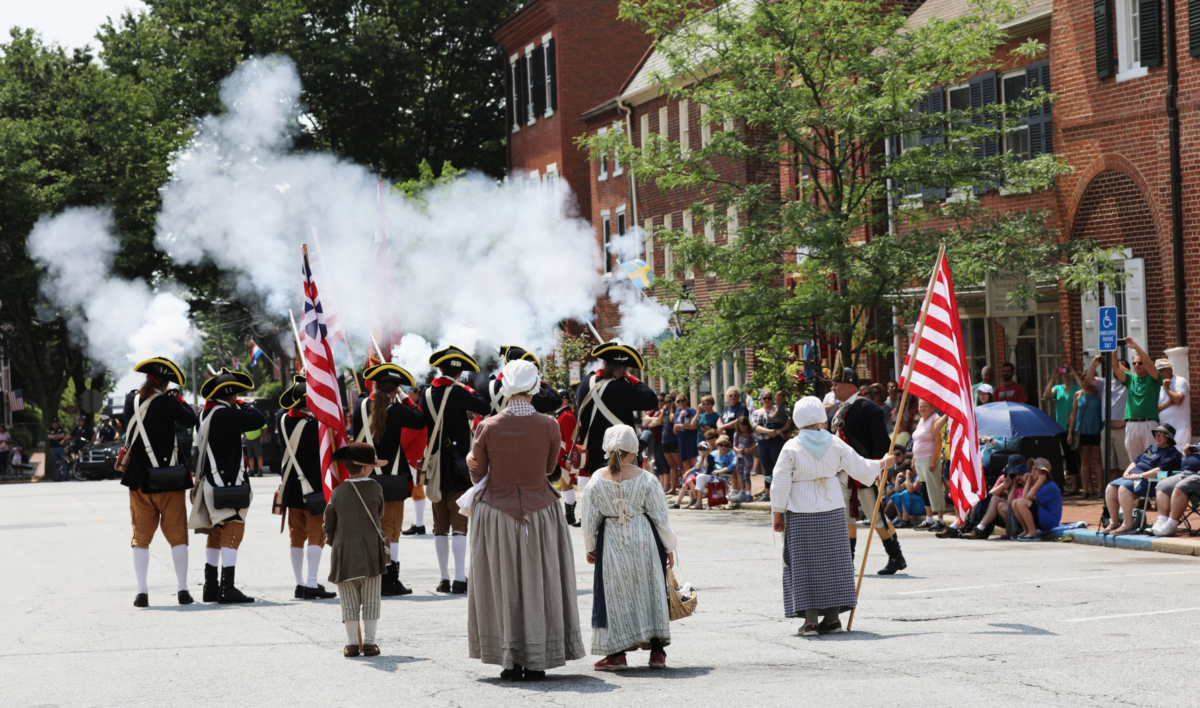They began before the nickname-triggering event in 1787, and continued through the 2020 election
Last November, Delaware elected the first openly transgender state senator in U.S. history. When Democrat Sarah McBride won the race for the First Senate District with 73 percent of the vote, she also became the highest-ranking transgender official in the country.
McBride’s election is just the latest in a long list of achievements in which The First State has scored, well, firsts.
The state’s nickname, of course, is derived from the fact that, on Dec. 7, 1787, Delaware became the first of the 13 colonies to ratify the U.S. Constitution, doing so with a unanimous vote of the 30 delegates to the Delaware Constitutional Convention in Dover. (Interestingly, “The First State” did not become the official state nickname until May 23, 2002, following a request by Mrs. Anabelle O’Malley’s first grade class at Mt. Pleasant Elementary School.)
But several “firsts” occurred in Delaware even before the nickname-triggering event in 1787.
Perhaps the most significant of these took place on June 15, 1776. In an action that reenforces its claim to being the true “First State,” Delaware declared independence from both Great Britain and Pennsylvania. Says James R. Hanby Sr., a justice of the peace and unofficial historian of the Brandywine Hundred area: “Since 1704 the three lower counties on the Delaware River were permitted to have their own Assembly, while the other counties of Pennsylvania had theirs, and both reported to the same governor. Delaware drafted a new constitution and became the ‘Delaware State,’ thus becoming the first of the colonies to call itself a state.”
Three Unique Events
This event became the annual “Separation Day”—a unique-to-Delaware celebration held in New Castle on the second Saturday in June. It has become a Friday-Saturday affair, with food and craft beer vendors on Friday night and a Saturday parade that includes re-enactors, bands, dance teams, classic cars, sports teams, and mascots. The judged parade proceeds along Delaware Street into Courthouse Square. Last year, the pandemic cancelled the celebration.

While we’re listing uniquely Delaware events, we must include Return Day and Big August Quarterly, both of which COVID KO’d in 2020.
Return Day, celebrated each year in Georgetown two days after the November general election, is an example of “the Delaware way.” Politicians from all over the state as well as U.S. Senators and Representatives get together for a ceremonial burying of the hatchet. Featuring a parade and food vendors, the celebration is somewhat similar to Separation Day. A regular event since 1828, it was suspended during World War II, and last year the pandemic cancelled the parade and food.
Big August Quarterly, now held in Tubman-Garrett Riverfront Park, is an annual celebration to commemorate the founding of the Union Church of Africans, the first African American Church in the United States. As the August Quarterly website states: It “began in 1814 [and] has remained a time of reunion, religious revival and celebration of freedom for the people in and around Wilmington.” It is the oldest such celebration in the U.S.
Here are some other pre-1787 events, compiled with James Hanby’s help:
• On March 29, 1638, Dr. Tymen Stiddem (Stidham) arrived on the Kalmar Nyckel, becoming the first physician in Delaware, and likely the first actual trained doctor in the New World (“Also,” Hanby says, “my 10th grandfather.”)

• In 1763, Jeremiah Dixon and Charles Mason started the Mason-Dixon line survey just outside Newark. The line along the southern Pennsylvania border later became informally known as the boundary between the free (Northern) states and the slave (Southern) states.
• In 1778, Barrett’s Chapel in Frederica became “the cradle of Methodism” as a result of a meeting there between Francis Asbury and Thomas Coke, who were instructed by John Wesley to create a separate Methodist denomination in America following the Revolution. Says Hanby: “Wesley understood that as we were now a free country, it would be difficult to continue controlling the faithful from England. The plans laid out at that meeting at Barrett’s Chapel led to the Christmas meeting in Baltimore at which Coke and Asbury formally created the first bishops and church leadership structure for the American Methodist Church.”
One alleged event that has been branded as myth by both Hanby and Wade Catts, president of South River Heritage Consulting in Newark, is the flying of the “Betsy Ross” flag above Cooch’s Bridge during the battle of the same name on Sept. 3, 1777. “It’s a nice story,” says Catts, “but it appears to have been created in the late 19th century. No reputable flag scholar or researcher will support that claim.”
After the Constitution
In the 19th century, the parade of Delaware firsts throttled back a bit. In 1806, native Delawarean (He was born near Newport) Oliver Evans created the first automobile in the form of the “Oruktor Amphibolos,” or Amphibious Digger. It was built for the Philadelphia Board of Health to dredge the Schuylkill River and remove sandbars to open the port of Philadelphia. The 51-year-old inventor placed wheels on his steam engine and drove it over the streets of Philadelphia from his workshop to the river. “Kind of a pioneering Duck Boat,” jokes Hanby.

At the age of 29, Evans also was said to have built the first automated production line. In a factory outside Philadelphia he adapted five machines, including conveyors, elevators, and weighing scales, to produce a production line for grinding grain in which all movement throughout the mill was automatic.
During the 20th century, Delaware was the site of several original achievements:
• In 1923, a major First State industry got its start through a mistake. Delawarean Cecile Steele ordered 50 baby chickens, but somebody added a zero to the order and she received 500. She raised them, later sold 387 for meat, and thus was born the broiler industry. By 1936, the Delmarva Peninsula accounted for two-thirds of the broilers raised in America.
• Also in 1923, the University of Delaware became the first college to offer a study abroad program.
• In late 1939, the DuPont Co. began the first production of nylon at its plant in Seaford. After an initial application in toothbrushes, the miracle material found a home in women’s hosiery, prompting “nylon riots” across the country. “Nylons” became scarce during World War II, when the fabric was used in manufacturing parachutes (some of which became post-war wedding gowns), tire cords, ropes, aircraft fuel tanks, shoelaces, mosquito netting and hammocks.
• The first spacesuits for NASA astronauts were built in the ILC Dover plant in Frederica, in the late 1960s, and ILC Dover has continued to be the primary supplier of spacesuits for NASA in the 50-plus years since the first Apollo flight.
Summer of ‘68
• In 1968, Wilmington was the scene of a less-than-proud achievement for the state. Two days of rioting in the city followed the April 4 assassination of Dr. Martin Luther King Jr., prompting Gov. Charles L. Terry Jr. to send in the National Guard to restore order. He then refused to remove them even after order was restored, and the situation continued for more than nine months, with Guardsmen patrolling the streets in Jeeps.
“Only after Gov. Russell Peterson was elected and sworn in, in January of 1969, did the occupation end,” says Hanby. “It was one of Peterson’s first acts as governor. It gives Wilmington the dubious distinction of having been occupied by the army for longer than any city in America since the end of Reconstruction in 1877.”
• A happier note was struck in 1984 at the Winter Olympics in Sarajevo, Yugoslavia (now Bosnia and Herzegovina), where the state scored one of its few athletic firsts. Delawarean Francis Joseph “Frank” Masley became the first American luger to carry the U.S. flag in opening ceremonies. Masley, who held 10 national records, also competed in the 1980 and the 1988 games.
Equipped with a degree in civil engineering from Drexel University, Masley went on to a successful business career. Along with his wife, Donna, he founded Masley Enterprises in 2000 in the basement of their home in Wilmington. The company eventually moved to Jessup Street and became a leading supplier of technical hand-wear solutions for industry and the U.S. military. Sadly, Masley died of melanoma in 2016, at the age of 56. Donna continues as president and CEO of the business.
In closing, a disclaimer: This is by no means a complete list of Delaware firsts. Indeed, a couple of additional achievements are mentioned in Jerry duPhily’s “From the Publisher” at the front of Out & About magazine. But we hope you’ll agree that for a state that is diminutive (2,491 square miles, population of 985,741), pound-for-pound we stack up pretty well against the other 49.




